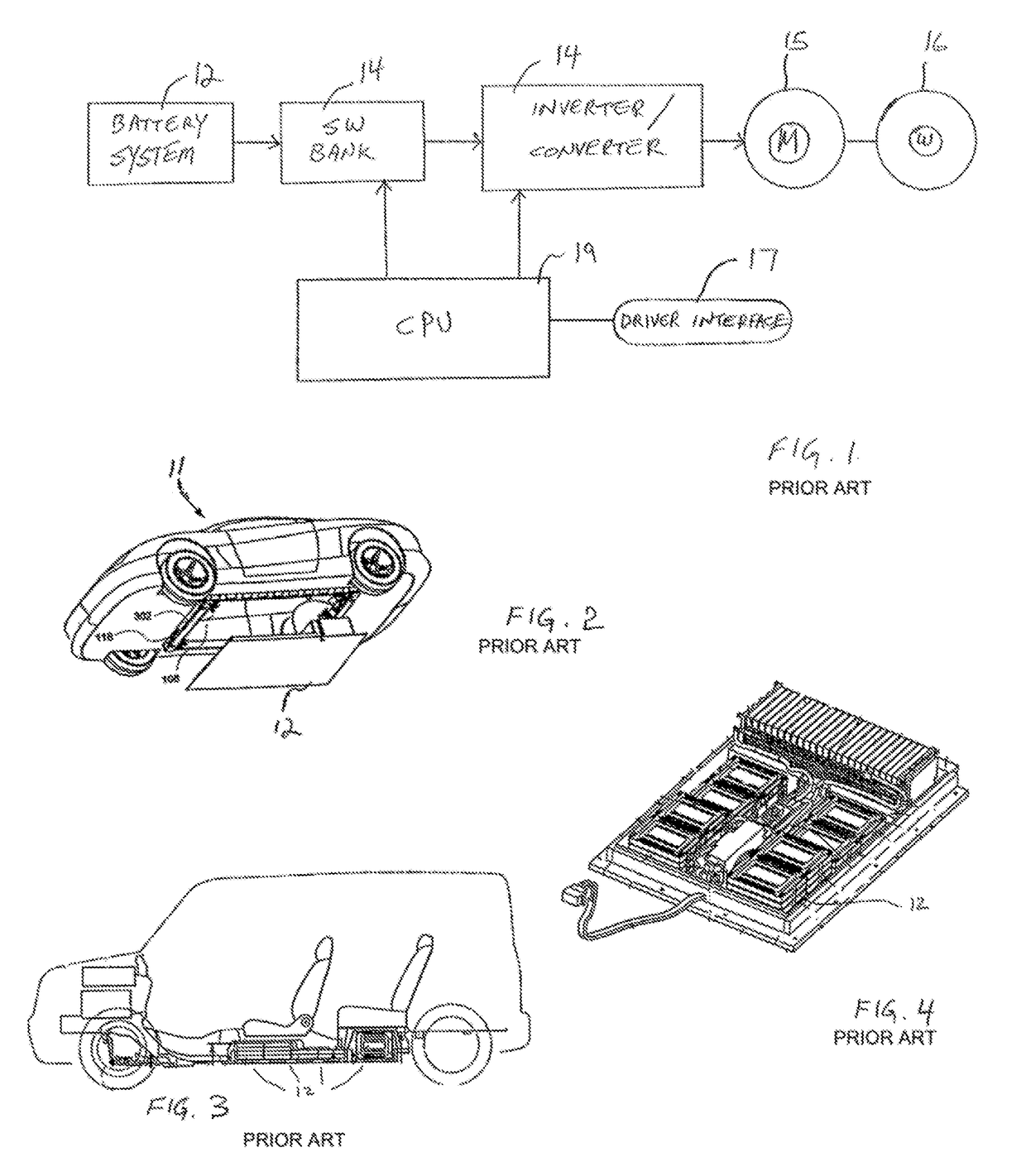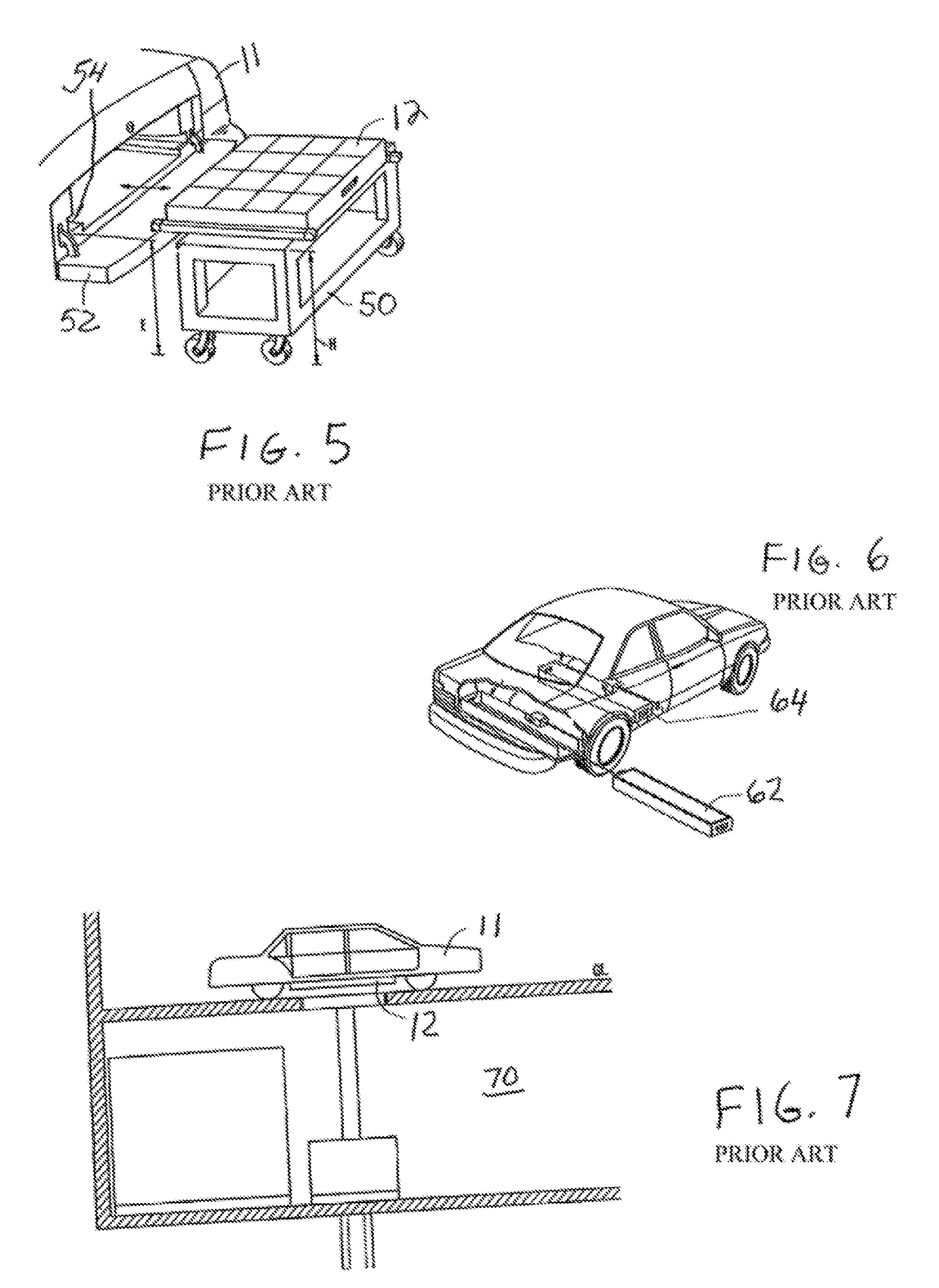Vehicular accessory
- Summary
- Abstract
- Description
- Claims
- Application Information
AI Technical Summary
Benefits of technology
Problems solved by technology
Method used
Image
Examples
Embodiment Construction
[0056]Referring to prior art FIG. 1, the electrical / mechanical system 10 of a BEV comprises a battery system 12, including therein one or more, and typically hundreds of individual batteries or battery cells, that produce a DC voltage of, say, about 100 volts that is provided to a switch bank 13 that connects the battery output to a voltage inverter or converter 14 that produces an output that is suitable to drive motor or motors 15. The motors 15, in turn, drive the wheels 16 of the all-electric vehicle (BEV). As is well known, the motors 15 may be three-phase induction motors, driven by the AC output of the inverter 14, which output has a voltage whose duty cycle or frequency is varied to provide and regulate the electrical power that allows the motors 15 to accelerate / drive the wheels 16, in response to a driver controlled signals from driver interface 17, which reacts to the accelerator pedal or like device in the vehicle. The driver-controlled signals are provided to the CPU 19...
PUM
 Login to View More
Login to View More Abstract
Description
Claims
Application Information
 Login to View More
Login to View More - R&D
- Intellectual Property
- Life Sciences
- Materials
- Tech Scout
- Unparalleled Data Quality
- Higher Quality Content
- 60% Fewer Hallucinations
Browse by: Latest US Patents, China's latest patents, Technical Efficacy Thesaurus, Application Domain, Technology Topic, Popular Technical Reports.
© 2025 PatSnap. All rights reserved.Legal|Privacy policy|Modern Slavery Act Transparency Statement|Sitemap|About US| Contact US: help@patsnap.com



